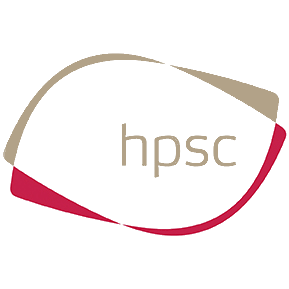Infectious disease figures for 2010 show decline in many common infections
The HSE Health Protection Surveillance Centre has published its annual report on the incidence of notifiable diseases in Ireland during 2010.
The main findings are as follows:
Healthcare associated infections:
- MRSA bloodstream infections fell 14% in 2010 with 305 cases notified compared with 355 cases in 2009. MRSA rates in Ireland are now at their lowest rates since surveillance began in 1999.
- Cases of Clostridium difficile-associated disease fell by 11% in 2010 with 1,696 cases notified compared with 1,897 cases in 2009.
- Overall outpatient antibiotics consumed in 2010 fell by 2% in 2010 compared with 2009. However, hospital antimicrobial consumption rose by 4% for the same period. A recently launched HSE initiative on reducing unnecessary antibiotic usage aims to improve these figures next year.
Gastroenteric diseases:
- Cryptosporidiosis cases fell by 34% in 2010 with 294 cases notified compared with 445 cases in 2009.
- Verotoxigenic E. coli cases fell by 17% in 2010 with 199 cases notified compared with 241 cases in 2009. There is a marked urban / rural divide indicating that contact with farm animals and the use of private water supplies are potential sources of this infection.
- Campylobacter cases fell by 1% in 2010 with 1,661 cases notified compared with 1,807 cases in 2009. Campylobacter is the most common bacterial cause of gastroenteritis in Ireland.
Respiratory diseases:
- Provisional data for 2010 shows an 11% decline in TB cases with 427 cases provisionally notified compared with 479 cases in 2009.
Bloodborne and sexually transmitted infections:
- HIV cases fell by 21% in 2010 with 331 cases notified compared with 395 cases in 2009. The highest proportion of new HIV diagnosis in 2010 were among men who have sex with men (MSM), with 40.5% of newly diagnosed HIV cases occurring in this category. This trend has been observed in many European countries to such an extent that ECDC now recommends that interventions to control HIV among MSM should be the cornerstone of HIV prevention strategies in Europe.
- Hepatitis C cases remained largely the same in 2010 with 1,239 cases notified compared with 1,241 cases in 2009.
- Sexually transmitted infections (STI) fell by 4.1% in 2009 with 10,834 cases notified compared with 11,294 cases in 2008. The 2009 data is the latest available information for STIs.
Vaccine preventable diseases
- Invasive pneumococcal disease cases fell by 10% in 2010 with 391 cases notified compared with 432 cases in 2009. Invasive pneumococcal disease continues to decline following the introduction of the conjugate pneumococcal vaccine in 2008. During 2010 the incidence of all types of invasive pneumococcal disease fell by 25% compared with 2008 when the vaccine was first introduced. Sadly, in 2010, one death occurred from pneumococcal meningitis in a young child who was unvaccinated.
- Measles cases increased by 149% in 2010, with 403 cases notified compared with 162 cases in 2009. 108 of these cases were hospitalised in 2010. Forty separate measles outbreaks were reported during the year. Cases predominantly occurred in the traveller and Roma communities and amongst those who choose not to have their children vaccinated against vaccine preventable diseases. Other European countries also saw measles outbreaks during 2010.
- Mumps cases fell by 53% in 2010 with 293 cases reported were notified compared with 620 cases in 2009. Complications of this disease in 2010 included orchitis, deafness, pancreatitis, encephalitis and appendicitis.
Commenting on the publication of the report, HPSC director, Dr Darina O'Flanagan, said that the decline in many notifiable diseases was very welcome and was due to strong public health surveillance and hard work in the battle against infectious disease.
For example, the decline in healthcare associated infections will have been supported by a national hand hygiene observation audit tool and standard operating procedures for use in acute hospitals.
This was developed and piloted by HPSC, in conjunction with the Infection Prevention Society, in 2010 and was rolled out in 2011 with a programme of hospital hand hygiene auditor training. On a related issue, overall consumption of antibiotics in Ireland remains mid-to-high in comparison with other European countries but a recently launched HSE initiative on reducing unnecessary antibiotic usage should improve our ranking in Europe.
Vaccination remains an important and very effective way of combating many diseases. This is illustrated by the success of the conjugate pneumococcal vaccine which has led to a 25% reduction in all types of invasive pneumococcal disease in the two year period since its introduction. A catch-up MMR vaccination campaign is needed to control and eliminate the continued transmission of measles, mumps and rubella in Ireland as we saw a worrying number of measles outbreaks in Ireland and Europe during 2010.
The full report is available to view here.


